Embarking on a journey through a land’s culinary heritage is as essential as exploring its landscapes. A trip wouldn’t be complete without savoring the authentic flavors that define a culture. Gujarat, with its diverse and vibrant food offerings, is a testament to this culinary symbiosis. While often dubbed as the land of “sweet” cuisine, Gujarati food unfurls a delightful array of options catering to every palate, even for those seeking savory delights. Let’s explore the fascinating world of Gujarati food heritage, where taste becomes an art and tradition rules.
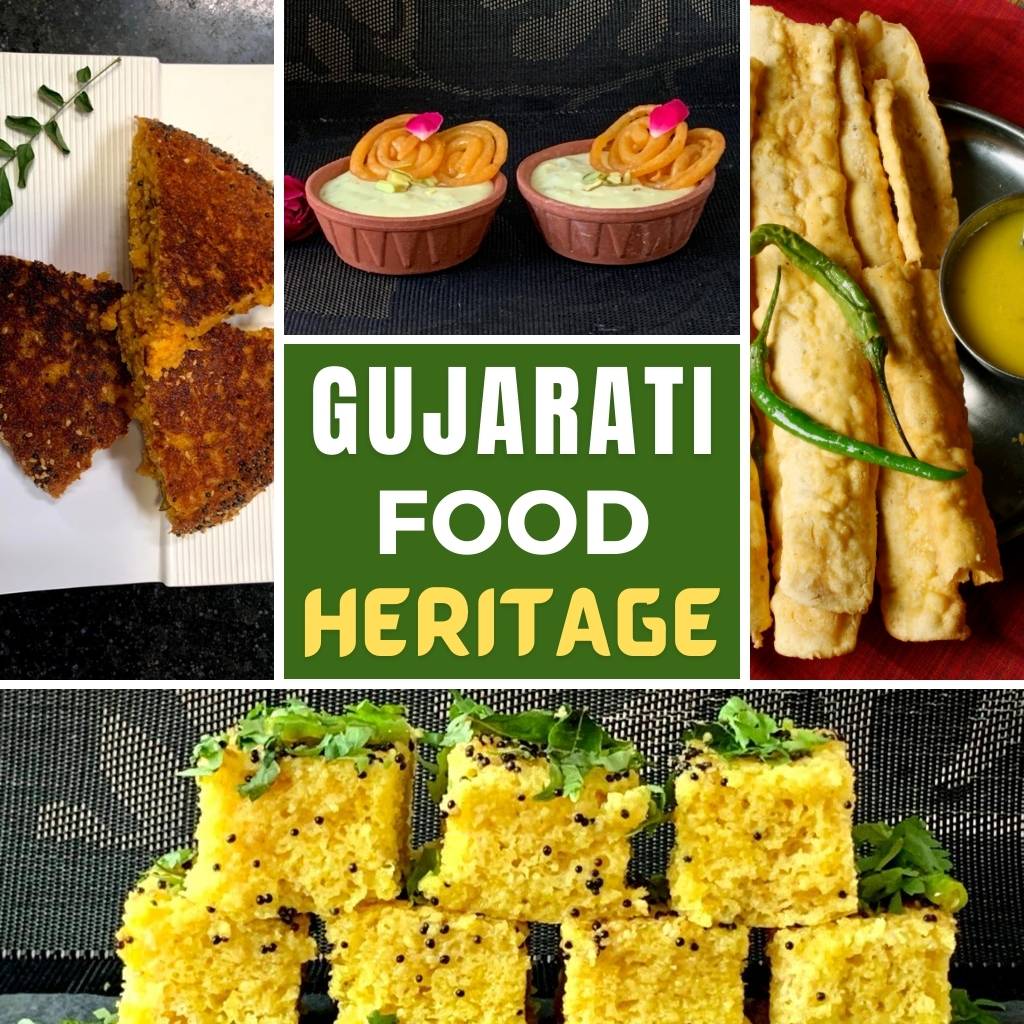
Gujarati Food Culture
Gujarati food culture is deeply intertwined with the state’s rich traditions and customs. The state is characterized by its predominantly vegetarian nature, which is a result of a strong religious orientation. Jainism, a prominent religion in Gujarat, upholds principles of peace and non-violence. This has significantly shaped the culinary choices. Jain food, for instance, strictly avoids ingredients that grow below the soil, as uprooting them could harm microorganisms living around the roots.
Beyond Jainism, the cuisine also embraces “satvik” food, characterized by its simplicity and purity. This type of cuisine holds immense spiritual significance and aligns with the philosophy of nourishing both the body and the soul. Such Gujarati dishes are made from fresh and seasonal ingredients, prepared with minimal spices to preserve their natural flavors.

A quintessential element of Gujarati dining is the famous Gujarati Thali. This traditional meal is a complete embodiment of the state’s culinary heritage, representing a harmonious blend of flavors and textures. In a Gujarati Thali, a variety of dishes are served together on a large platter, creating a balanced and fulfilling meal. It emphasizes variety, nutrition, and balance, which is reflective of how a typical household enjoys its meals.
The prohibition on alcohol in Gujarat has influenced not only the social landscape but has also had a profound effect on the culinary preferences. The absence of alcohol has contributed to the dominance of vegetarian cuisine in Gujarat.
Famous Gujarati Dishes
Let your taste buds be tantalized by a showcase of Gujarati cuisine’s most beloved dishes. From the famous fafda to the savory delights of theplas, these famous Gujarati dishes encapsulate the essence of the region’s culinary creativity. Let’s explore Gujarat’s gastronomic treasures.
1. Dhokla
A popular Gujarati dish, dhokla is a fluffy and spongy steamed cake made from fermented rice and chickpea flour. Seasoned with mustard seeds, curry leaves, and green chilies, it offers a delightful balance of tangy and savory flavors. Often eaten as a snack or breakfast, dhokla represents the culinary creativity of Gujarat.
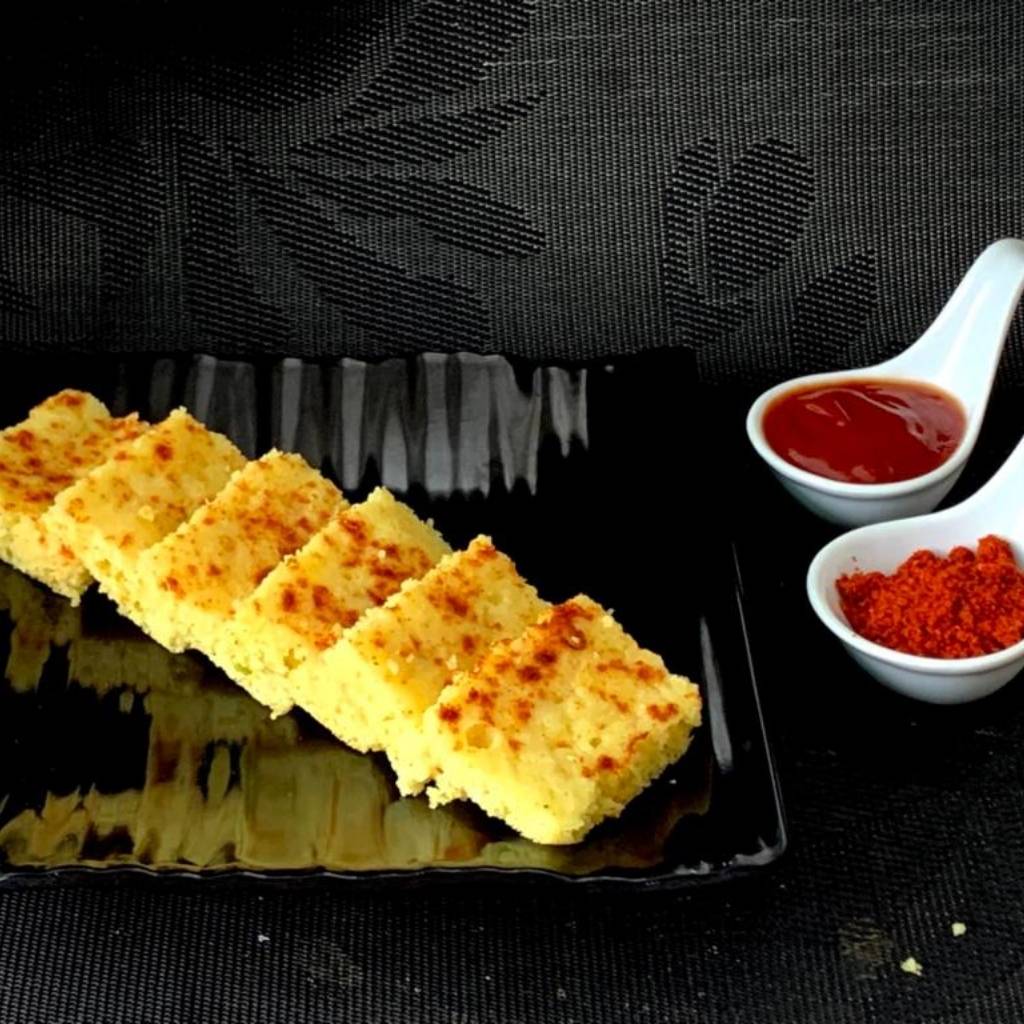
2. Thepla
Thepla is a thin, flavorful flatbread made from wheat flour and spiced with fenugreek leaves, turmeric, and other ingredients. They have a shelf life of 5-7 days hence, are a convenient travel companion for Gujaratis. Theplas make a delicious snack or meal when paired with pickles or jams.
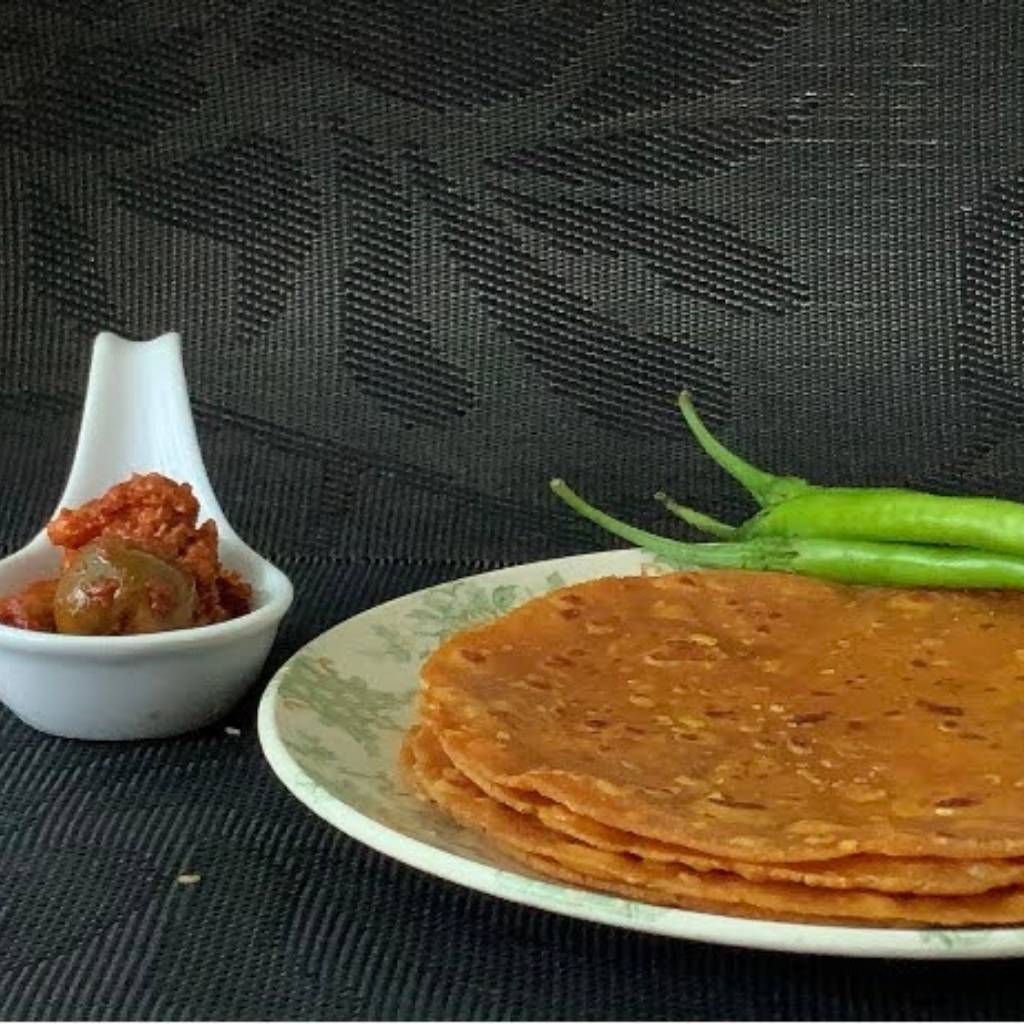
3. Khandvi
Khandvi is made from gram flour and yogurt, forming thin, bite-sized rolls. Seasoned with mustard seeds, curry leaves, and grated coconut, these rolls provide a balanced blend of textures and flavors. With its intricate preparation and light yet satisfying taste, Khandvi stands out as one of Gujarat’s most cherished delicacies.
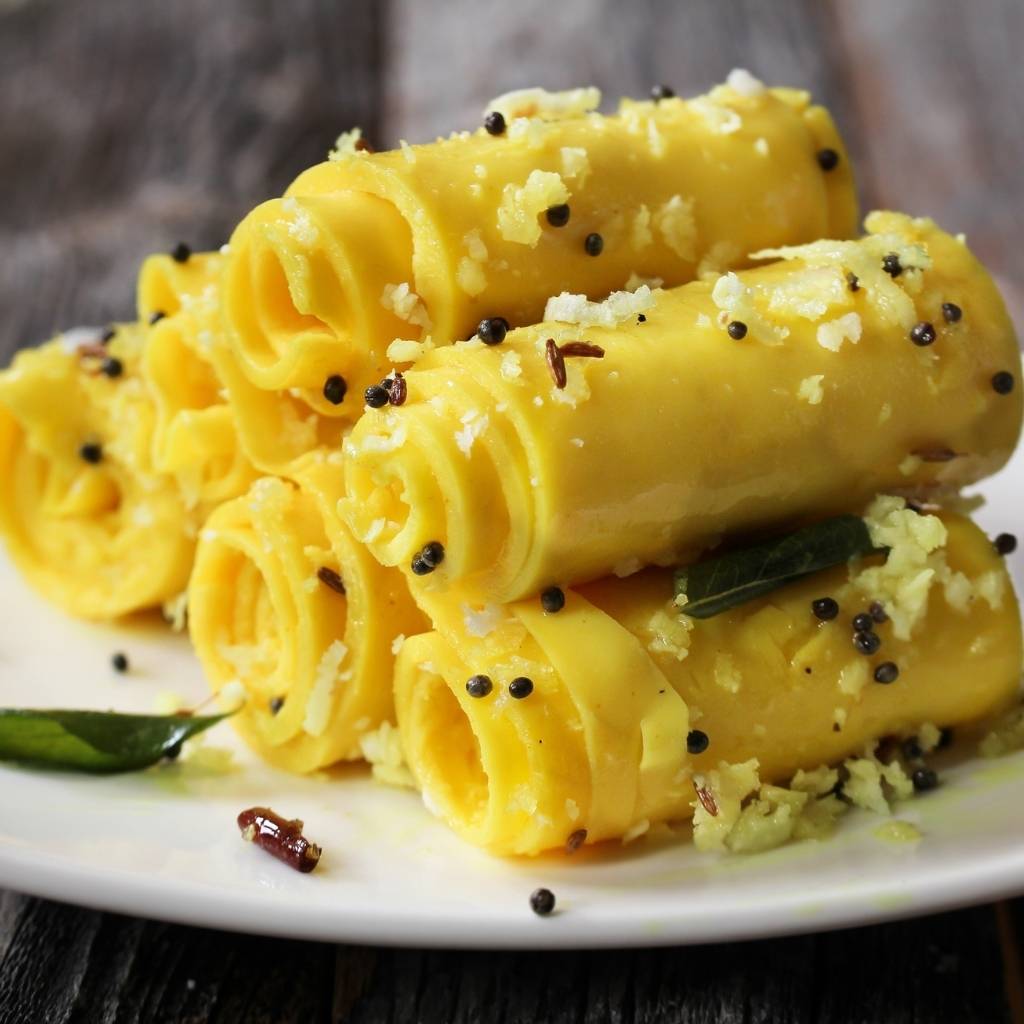
4. Undhiyu
Undhiyu, a hearty Gujarati dish, is typically crafted during the winter months when its diverse array of vegetables are in season. In this complex recipe, brinjal, potato, varieties of beans, and yam are mixed in a fragrant blend of spices, demanding meticulous preparation. A labor-intensive process results in a flavorful and wholesome dish that embodies Gujarati cuisine.
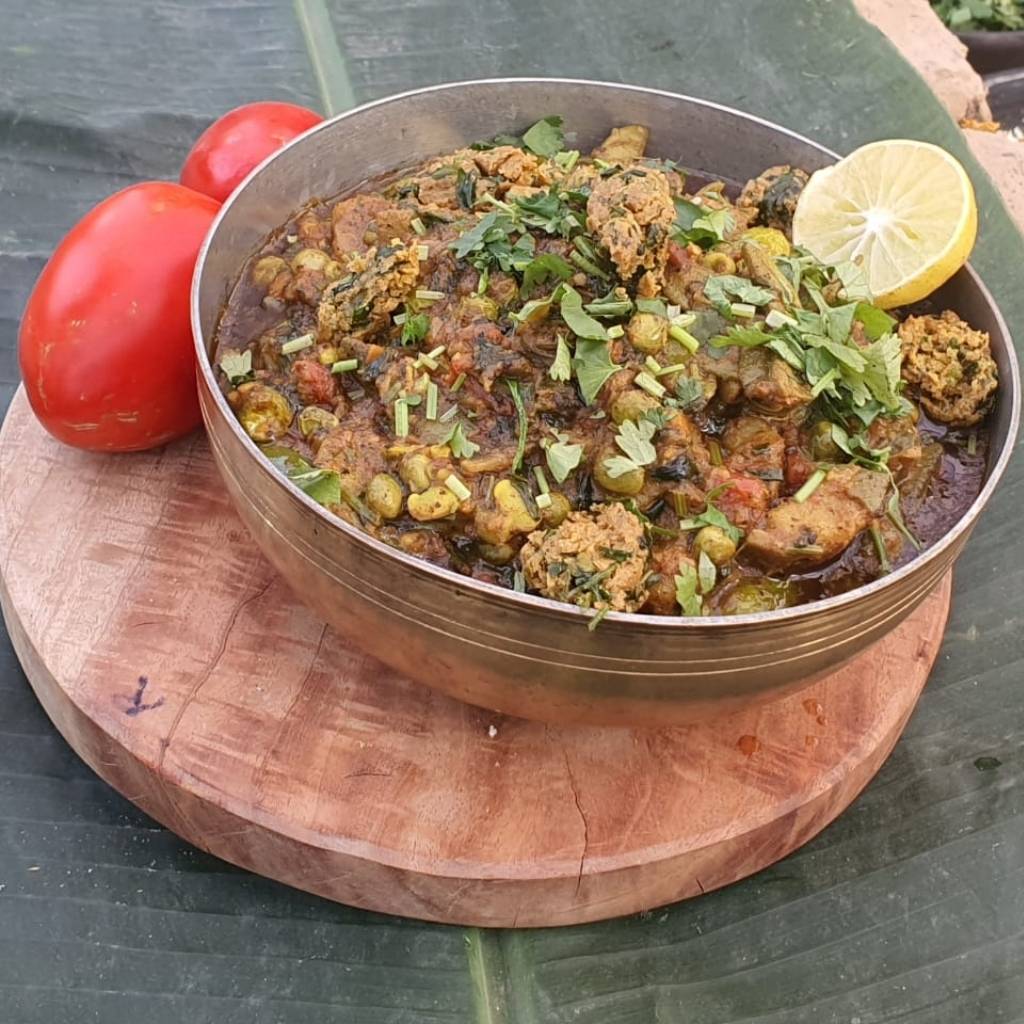
5. Handvo
Handvo, a wholesome and nutritious baked dish, is a savory cake made with rice flour, lentils, and buttermilk. Baked to perfection with vegetables like bottle gourd and spices, it has a crispy exterior and a soft interior.
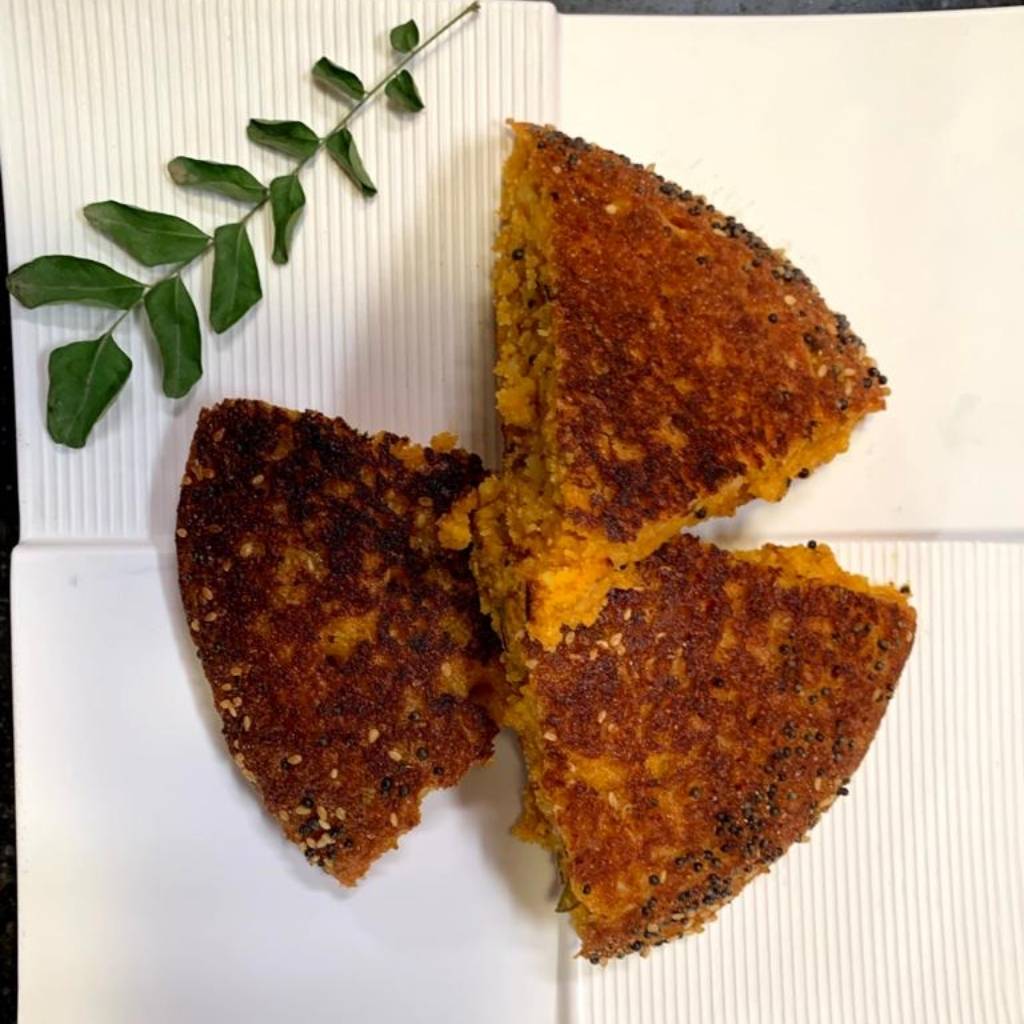
6. Fafda-Jalebi
Who hasn’t heard of Fafda and Jalebi? It is one of the most popular Gujarati dishes among travelers. Fafda and Jalebi are an iconic duo in the realm of Gujarati cuisine. Fafda, a crisp and savory snack made from gram flour, is commonly served with Jalebi, a sweet and syrupy dessert made from fermented batter. The combination of savory and sweet flavors strikes the perfect balance. For any Gujarati, Fafda and Jalebi are essential dishes, whether they are eaten for breakfast or as an evening treat.
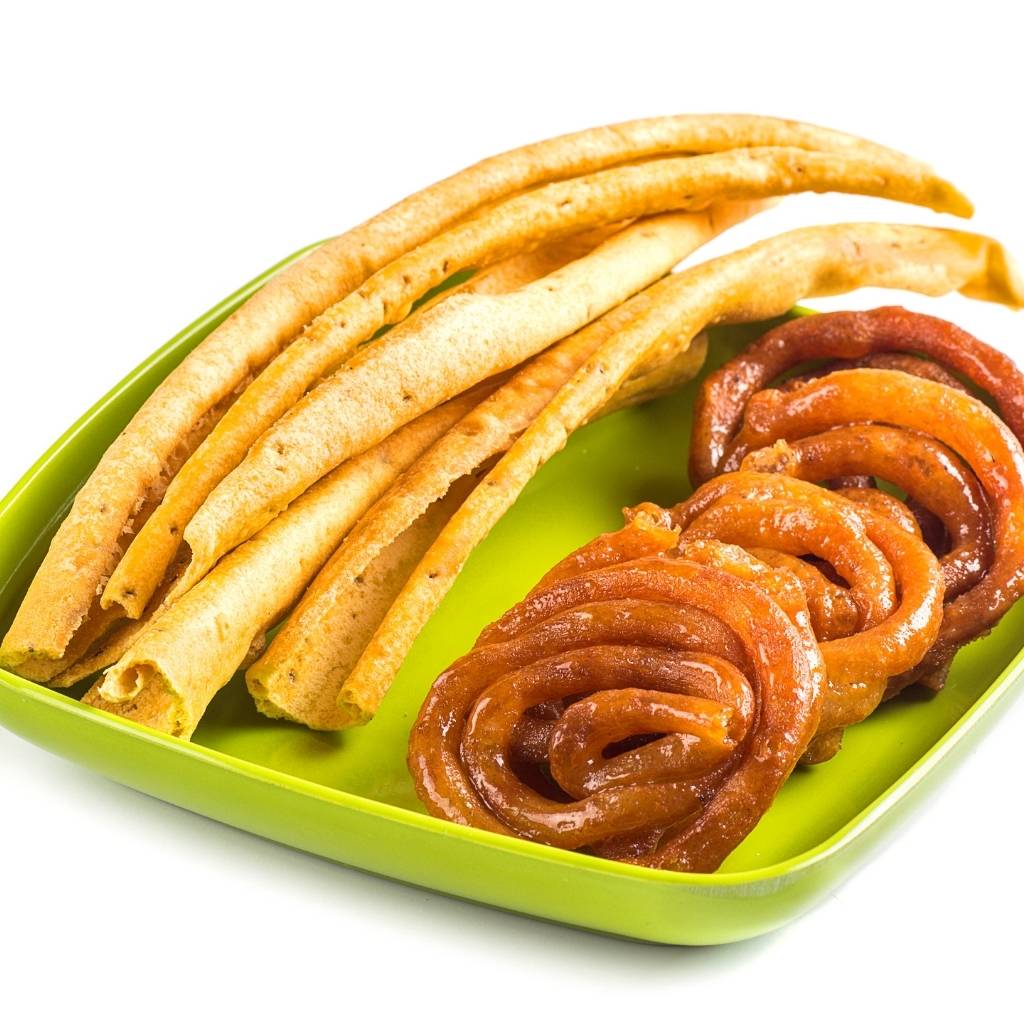
7. Dal Dhokli
A comforting Gujarati one-pot meal, Dal Dhokli combines wheat flour dumplings with spiced lentil stew. This flavorful lentil soup simmers the dumplings until they absorb its full flavor, resulting in a wholesome and delicious meal. A comforting delicacy combining lentils and dough, it’s a nourishing dinner that’s easy on the stomach.
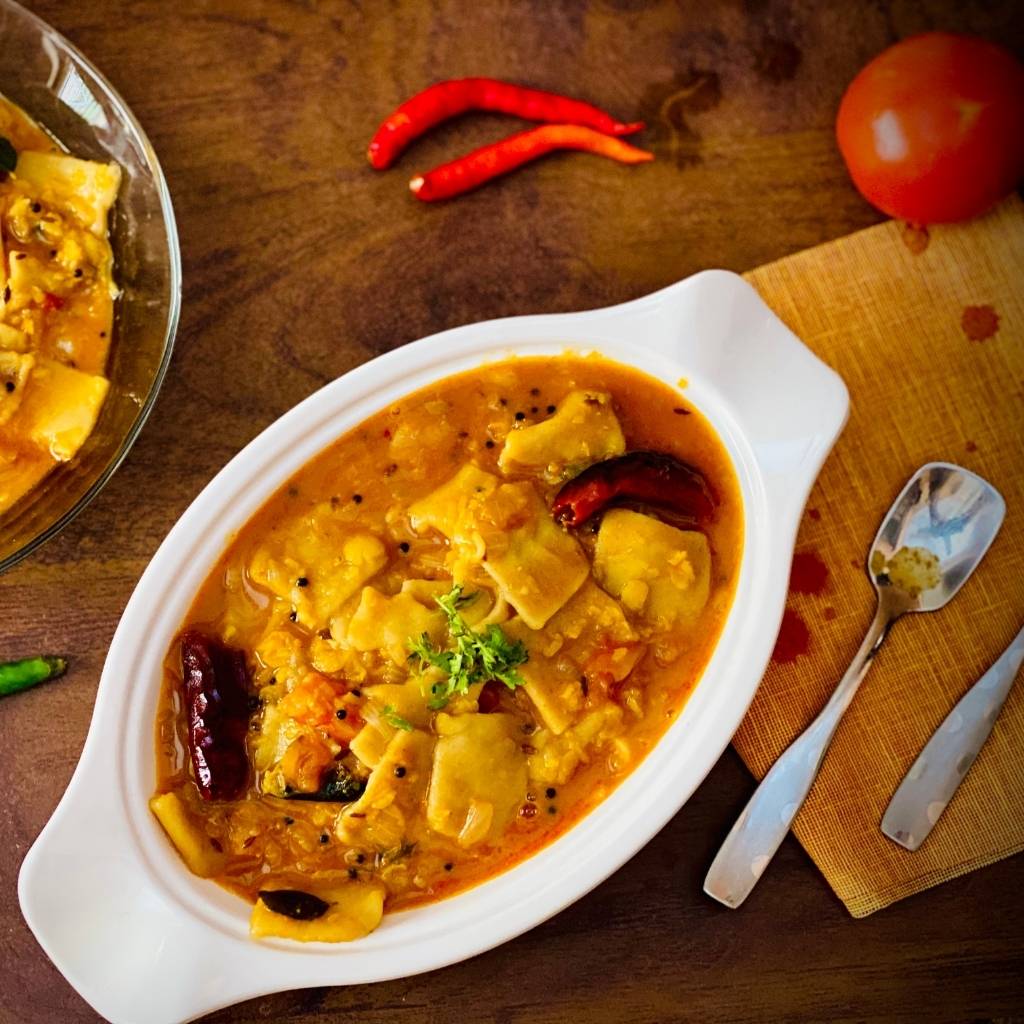
8. Patra
Gujarati snack patra consists of rolled and steamed colocasia leaves smeared with gram flour paste and sliced into circles. Often seasoned with mustard seeds, sesame seeds, and grated coconut, these savory rolls combine a variety of textures and flavors.
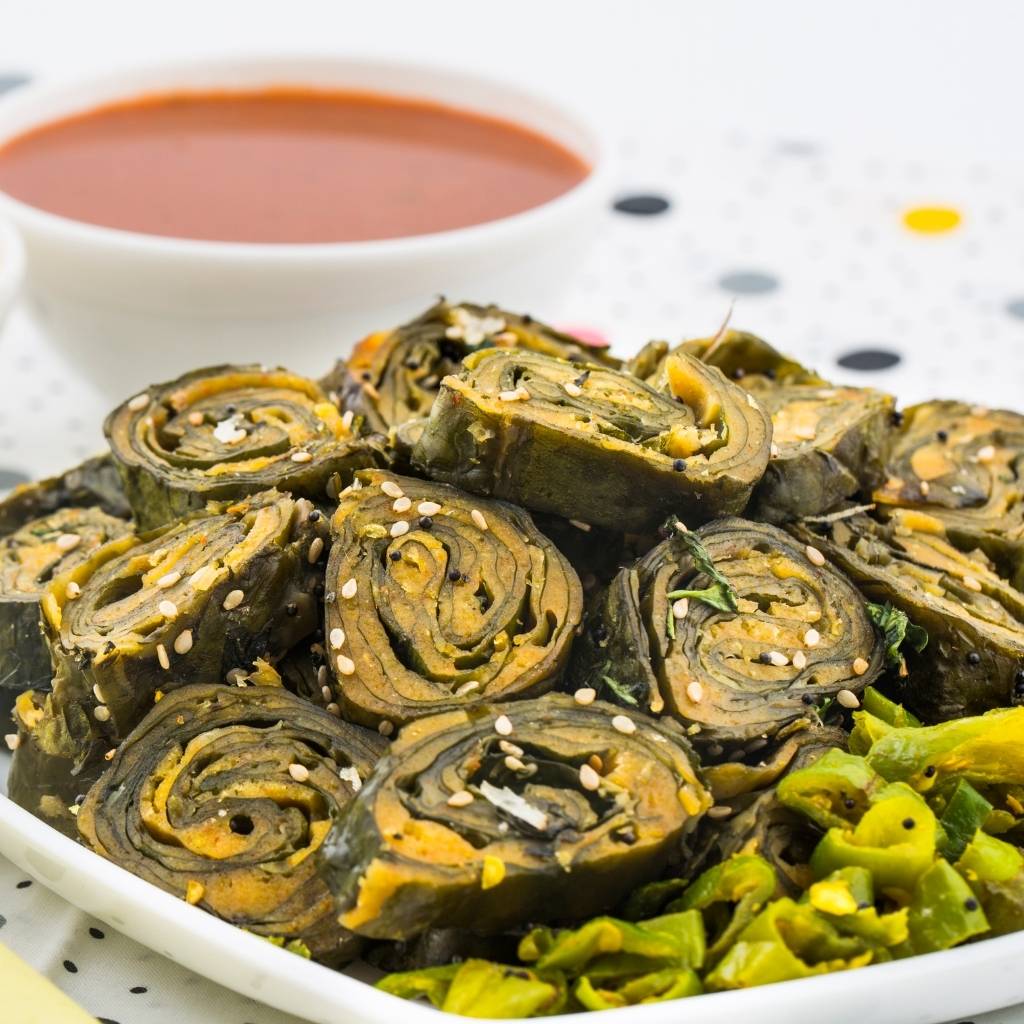
9. Muthiya
Usually made of chickpea flour, whole wheat flour, bottle gourd, and spices, muthiya is a popular Gujarati snack. The mixture is shaped into small dumplings or logs, which are then steamed or fried until they are cooked. Grated vegetables such as fenugreek leaves, spinach, or sesame seeds are often added to these savory bites to enhance both their taste and nutritional value. Muthiyas are typically served with chutney or yogurt on the side.
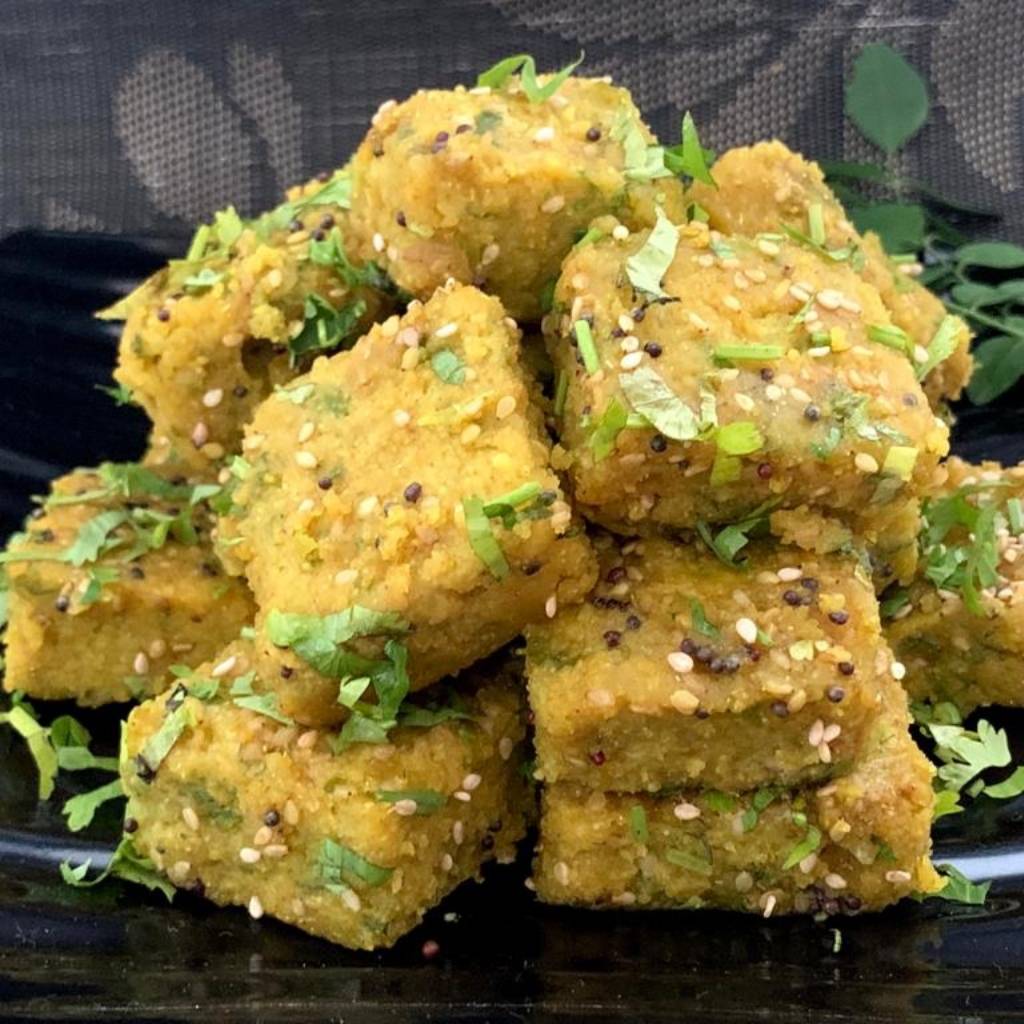
10. Bhakri
Bhakri, an unleavened flatbread that is a staple of Gujarati cuisine, is made from whole wheat flour. Cooked on the griddle or open flame, it possesses a rustic texture and goes well with curries, chutneys, and pickles. Its simplicity and versatility make Bhakri a cornerstone of Gujarati main course.
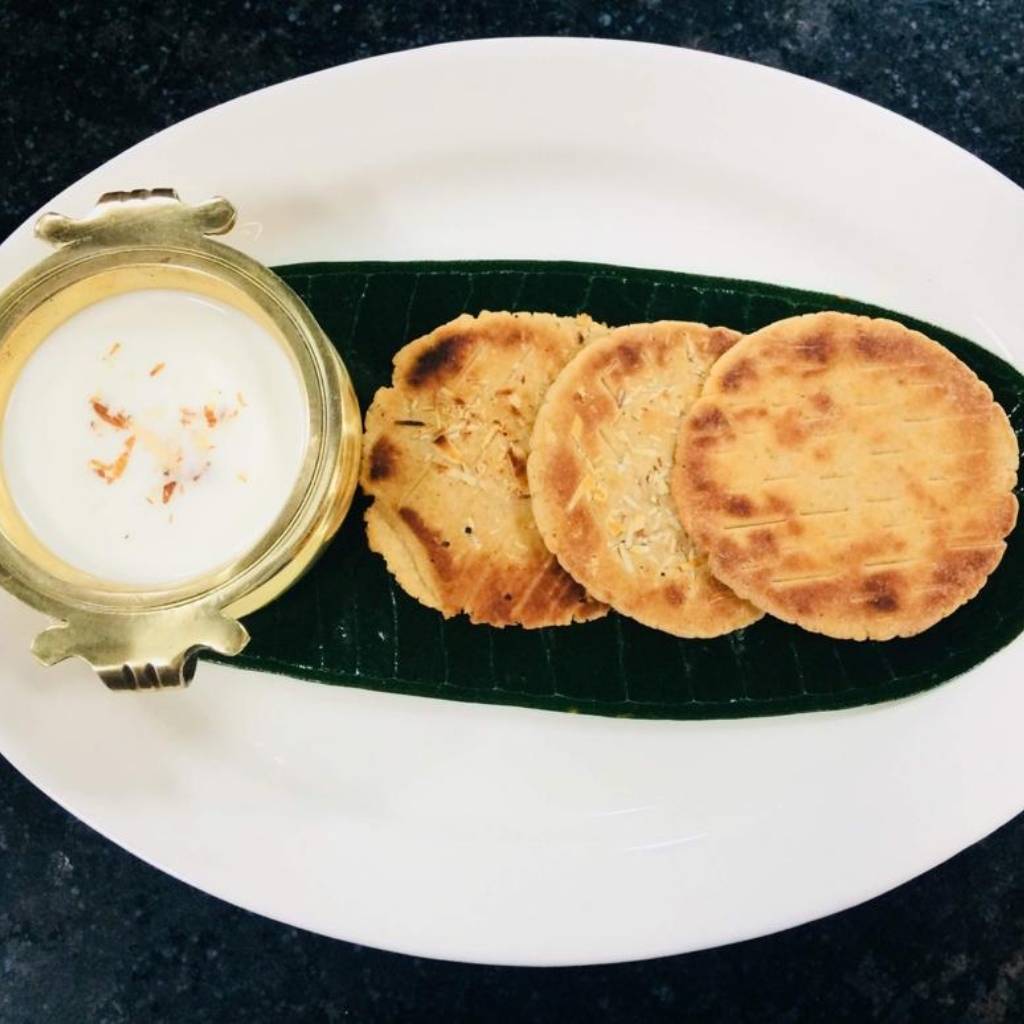
11. Khaman
Khaman, a beloved Gujarati snack, is often mistaken for Dhoklas by travelers. While both are commonly sold together, Khaman has its unique identity. The spongy, softer texture of Khaman is primarily due to the fermentation of gram flour. Khaman is typically topped with mustard seeds and fresh coriander leaves.
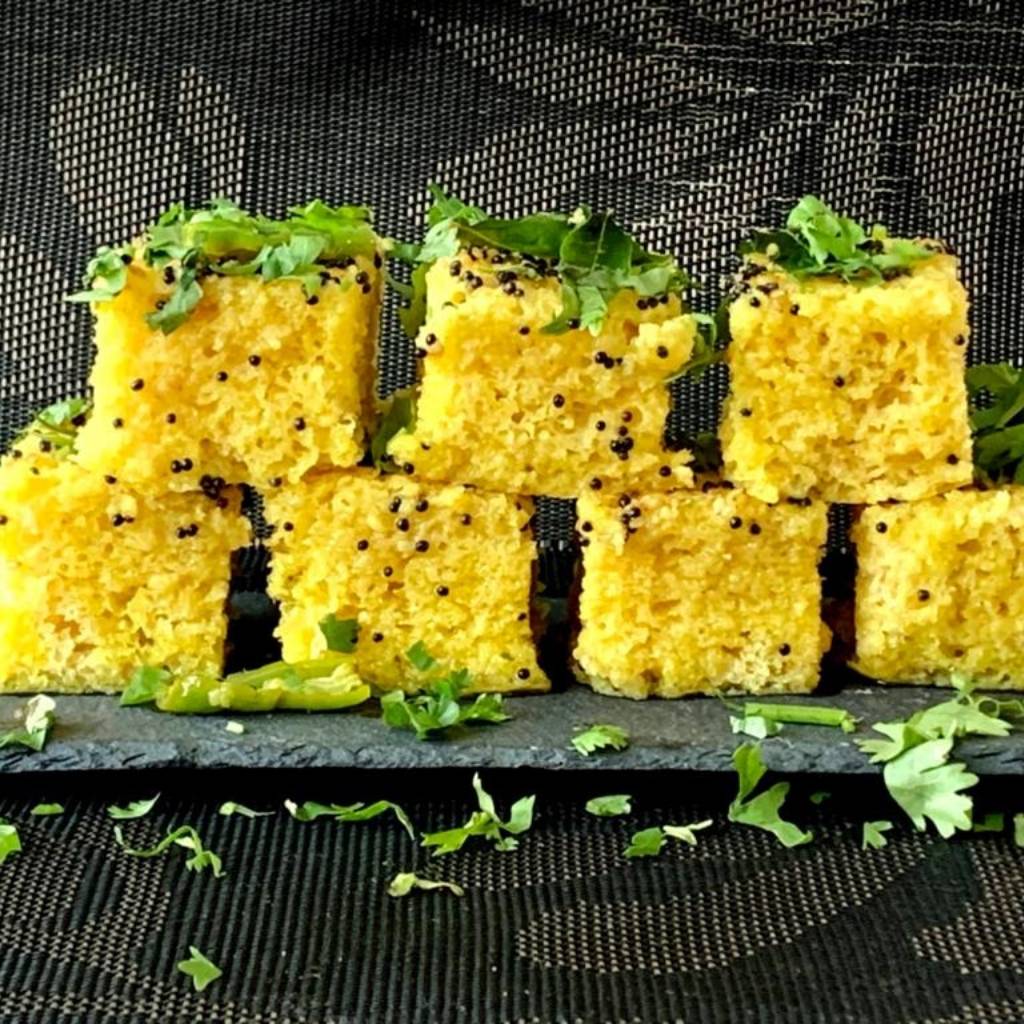
12. Khichdi
A versatile and wholesome dish, Khichdi is prepared by simmering rice and lentils together. There are different types of Gujarati Khichdi, such as Masala Khichdi with spices, Bajra Khichdi from millet, Sabudana Khichi, and Kadhi-Khichdi, where it’s paired with yogurt gravy.
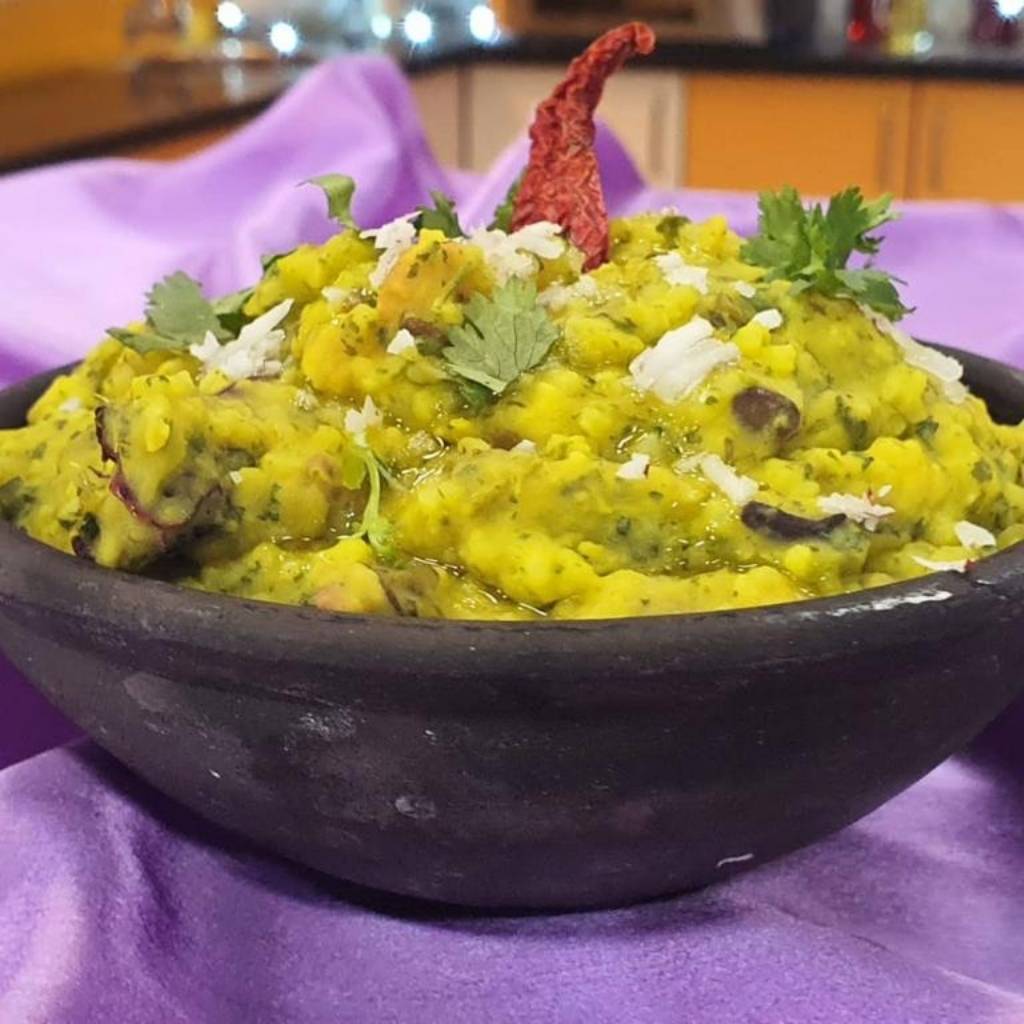
13. Dabeli
Dabeli, a popular street food, traces its origins to Kutch. Served in a soft bun, this snack features spicy potato filling garnished with pomegranate seeds, peanuts, and sev. Its unique combination of sweet, spicy, and crunchy elements makes it a popular street food in the state.
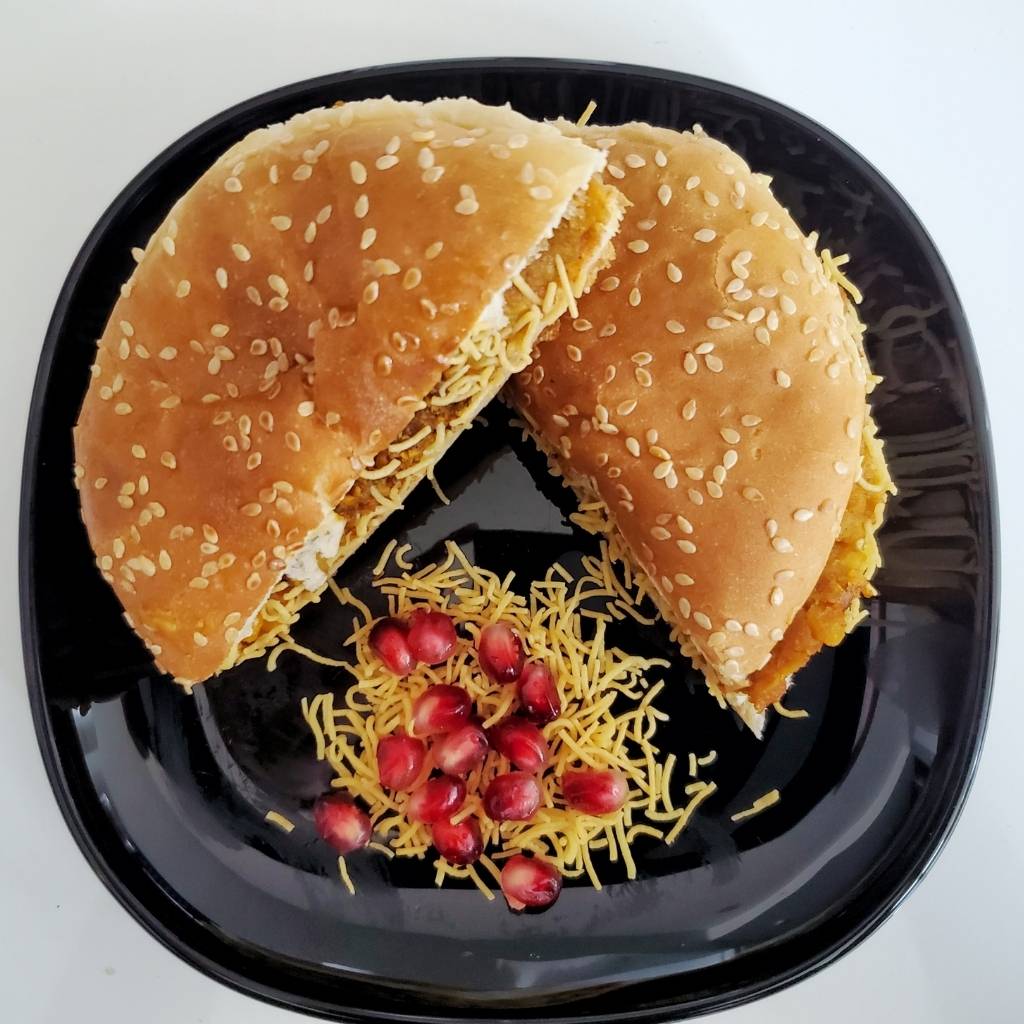
14. Sev Khamni
Traditionally, sev khamni is prepared from soaked and ground chana dal (split chickpea lentils) and flavored with mustard seeds, turmeric, and green chilies. As the mixture cooks, it thickens and acquires a unique texture. Following this, it is garnished with chopped coriander leaves, grated coconut, and a generous amount of sev (crunchy chickpea flour noodles). Among Gujarati snacks, this dish offers a delightful combination of softness, crunchiness, and spiciness.
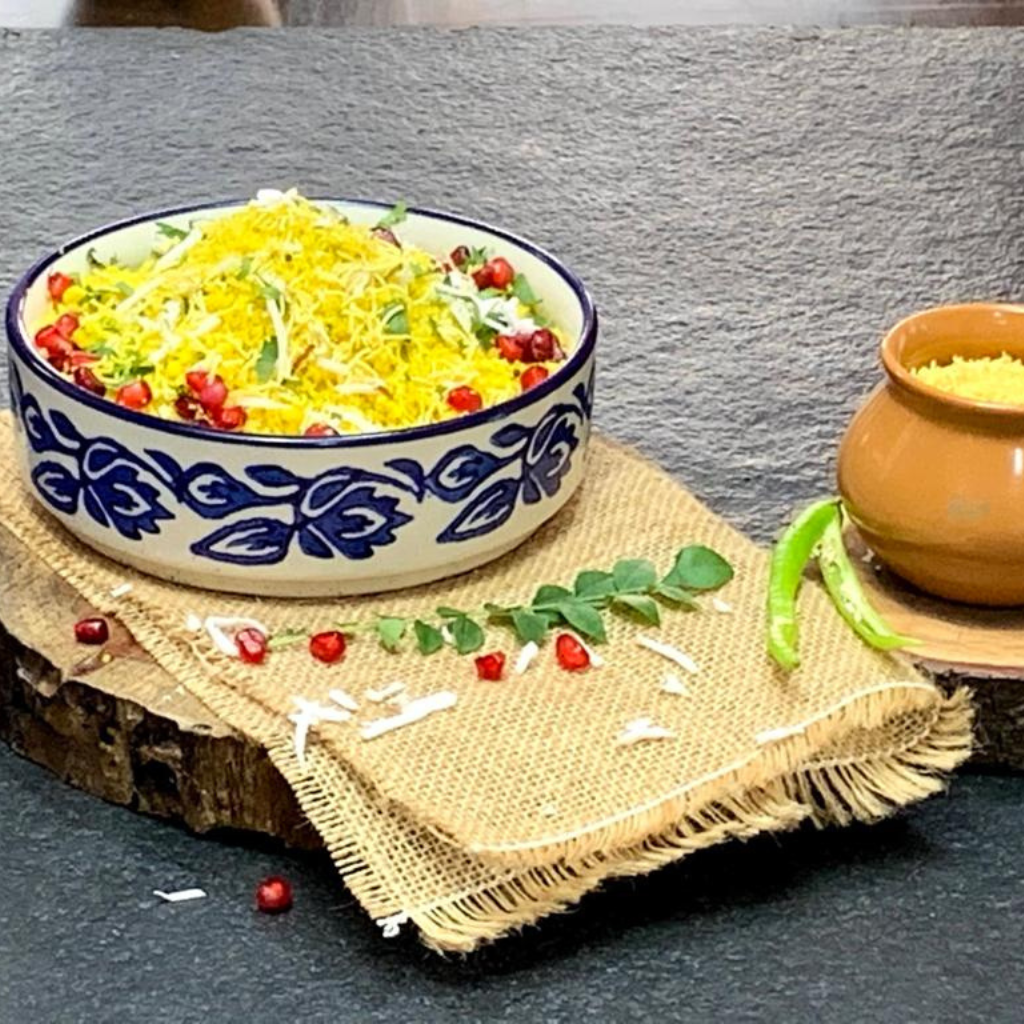
15. Dhanshak
A delectable Parsi dish, Dhanshak is a stew prepared with lentils and vegetables. Combining a blend of spices and cooked to perfection, it offers a harmonious balance of flavors.
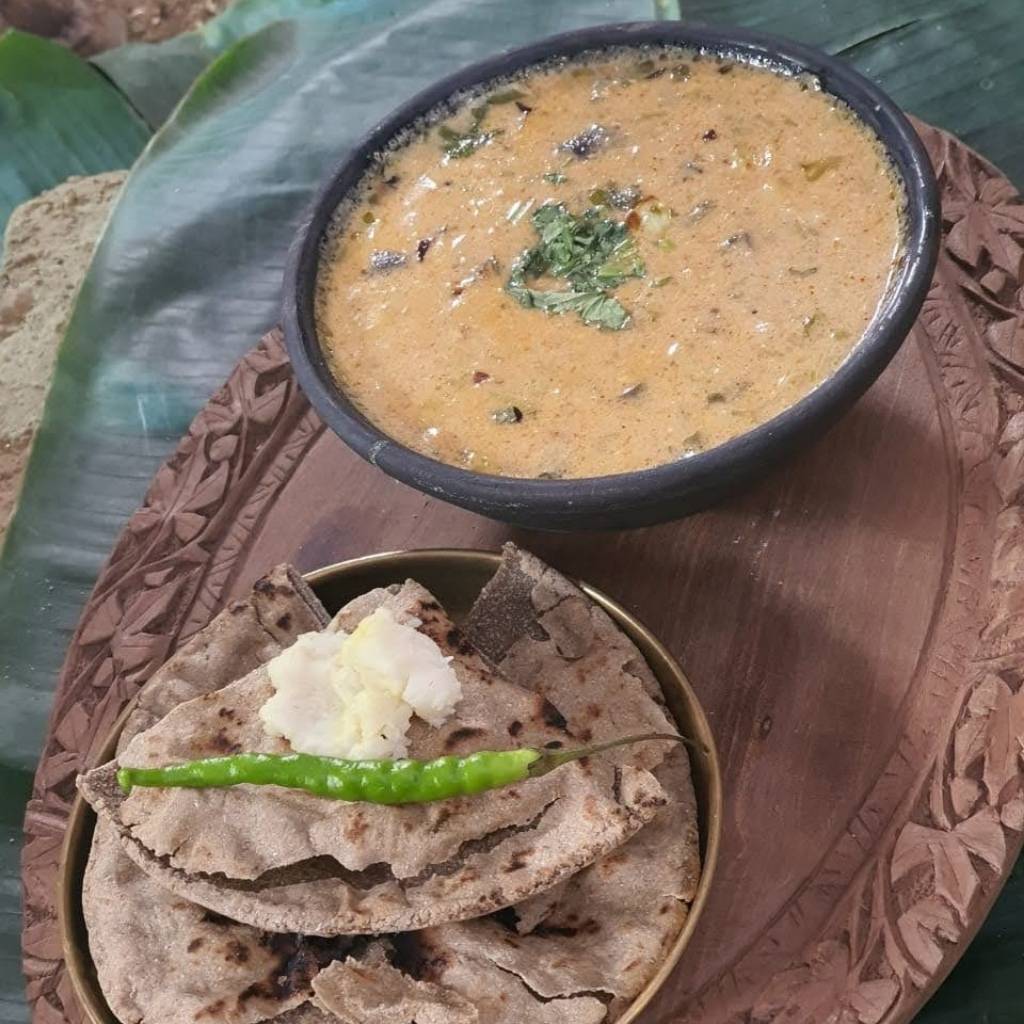
16. Rotlo and Olo
Traditional Gujarati winter dishes Rotlo and Olo consist of unleavened millet bread (rotlo) and a semi-dry curry made from mashed brinjal (olo). Rotlo is cooked on an open flame and served with olo, creating a satisfying and hearty meal for lunch or dinner. Winter-exclusive brinjals add to the seasonal charm of this dish.
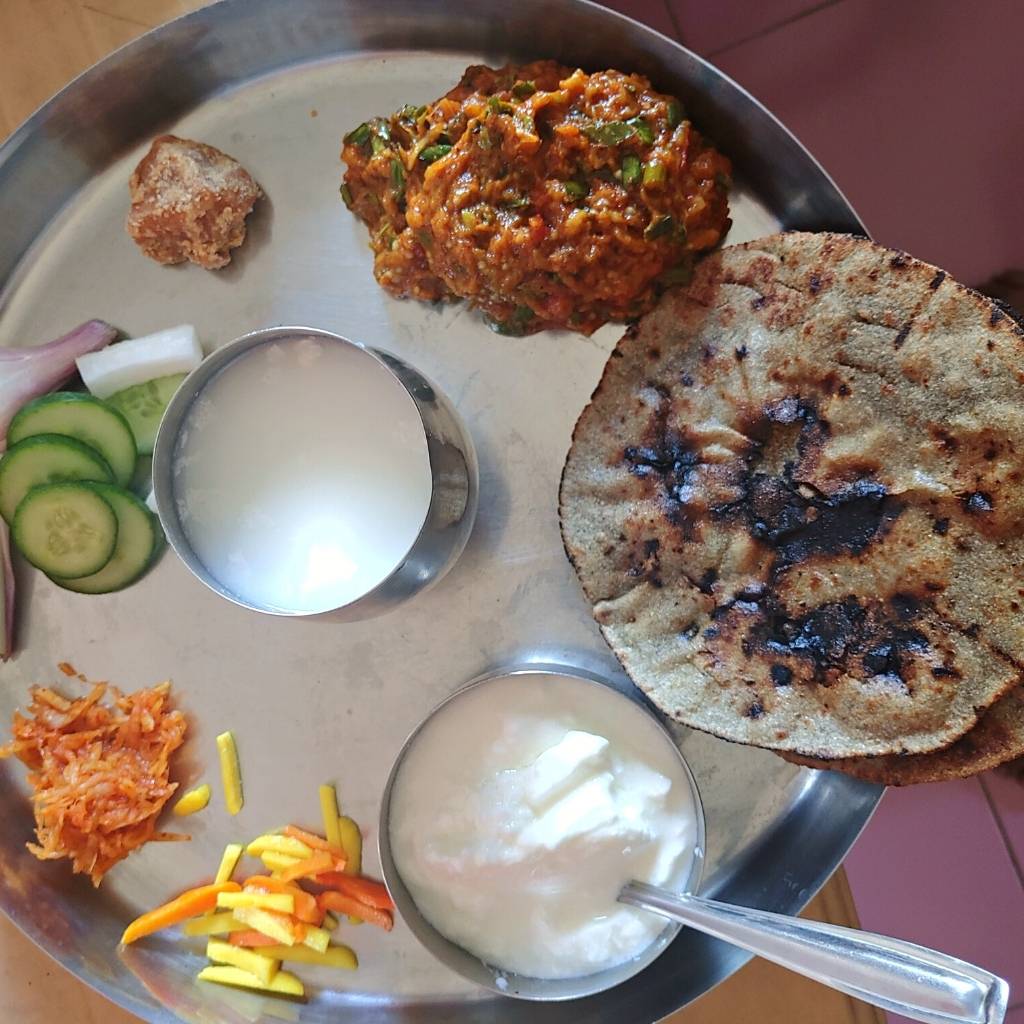
17. Khakhra
The Khakhra, a popular Gujarati snack made from whole wheat flour, is a thin, crispy flatbread. It is available in a variety of flavors including masala, methi, and jeera. It is common to enjoy these savory treats with pickles, chutneys, or yogurt.
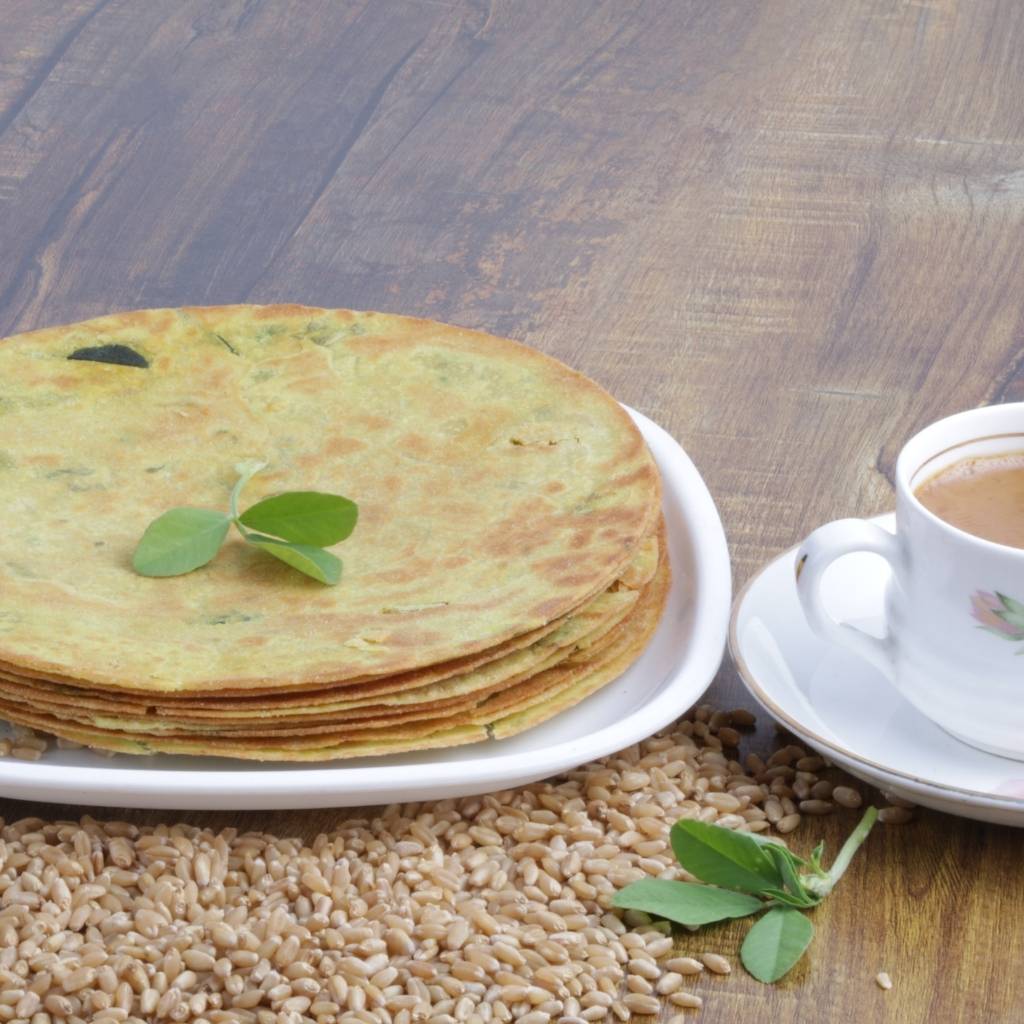
18. Rabadi
A traditional Gujarati dessert, Rabadii is a rich, creamy sweet dish made from thickened milk, sugar, and various flavorings like cardamom, saffron, or nuts. The blended flavor of cardamom, saffron, and dry fruits creates an exquisite treat with a grainy texture. This dish is often served during celebrations and festive occasions, and it provides an excellent finale to a Gujarati meal.
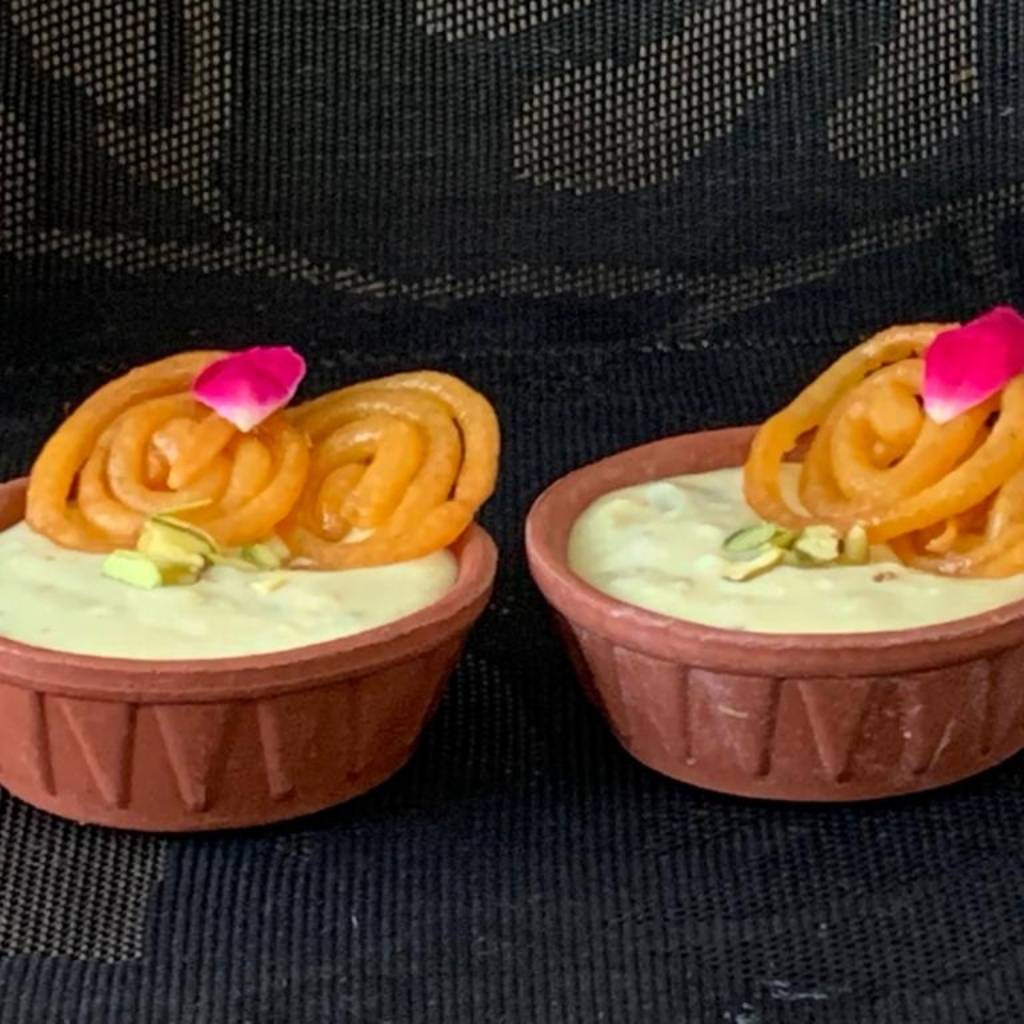
19. Aamras
An iconic Gujarati dessert, aamras is a smooth and delicious mango puree. It’s typically served chilled and made from ripe mangoes. It’s lightly spiced with cardamom. An aamras captures the essence of Gujarat’s love for mangoes, especially during summer.
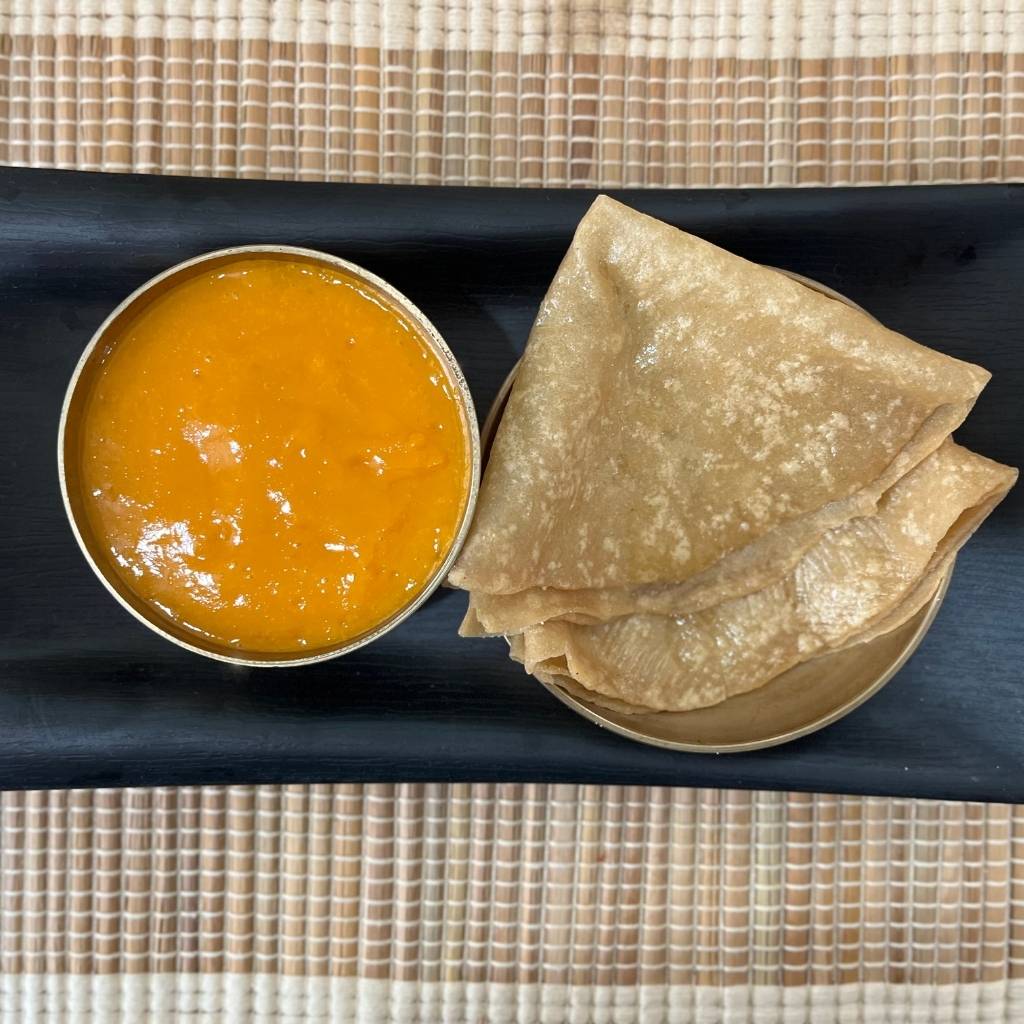
20. Shrikhand
Shrikhand is a sweet and creamy dish made with strained yogurt. The dish is flavored with saffron, cardamom, and sometimes garnished with nuts. Shrikhand’s velvety texture and delightful flavors make it a popular dessert choice, often enjoyed at Gujarati festivals and weddings.
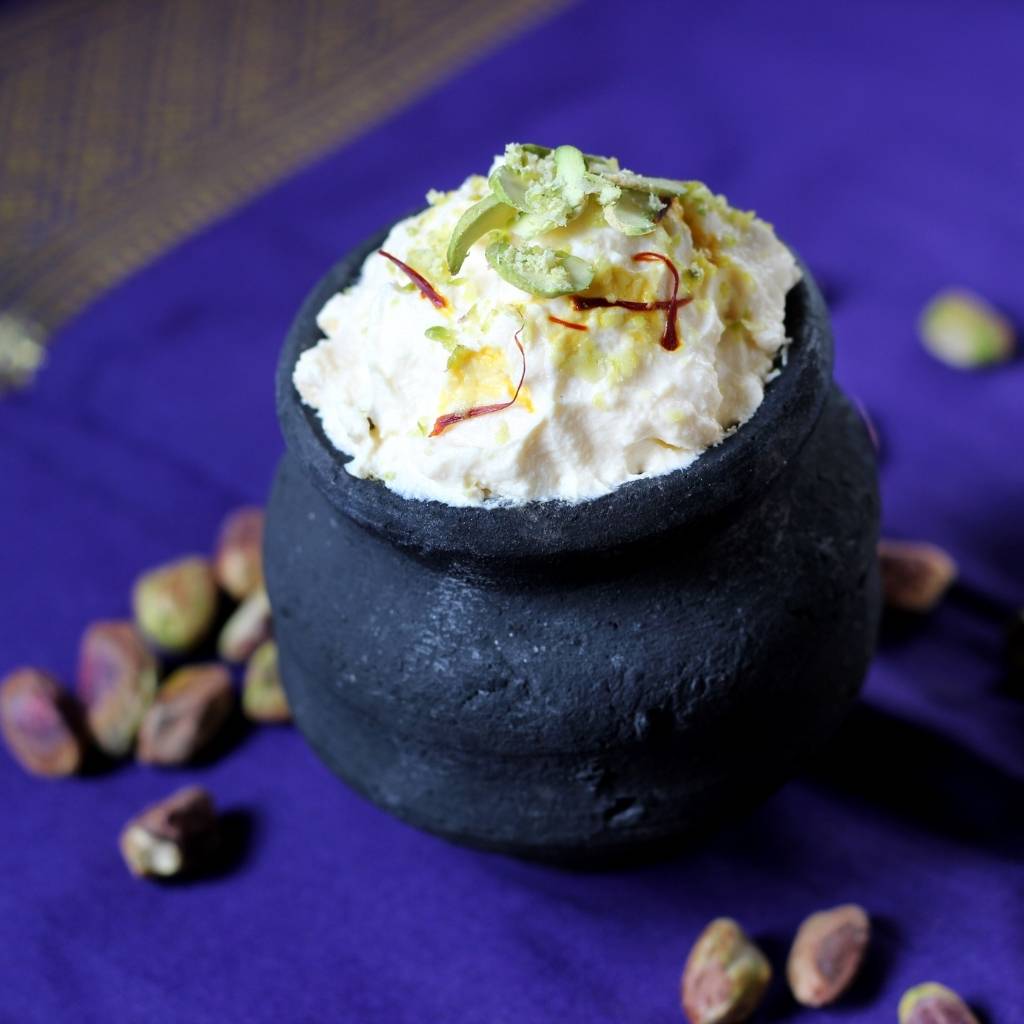
Fusion and Influence on Gujarati Food
Gujarati cuisine reflects the influences it has absorbed from neighboring states and beyond. Several culinary traditions have shaped the flavors of Gujarati food, including Maharashtra, Rajasthan, and Madhya Pradesh. Street food is a particularly strong example of this interplay, where Gujarat’s busy markets offer delicacies influenced by Maharashtra and Madhya Pradesh. The ubiquitous dishes Vada Pav, Pav Bhaji, and Chats have found a cherished place in Gujarati hearts, representing a seamless fusion of regional tastes.
Furthermore, Gujarati cuisine also incorporates flavors from the north of India. Naan and curries with ingredients like paneer and kofta exhibit the influence of North Indian cuisine. They provide a delightful contrast to the mildly spiced Gujarati cuisine. Dal Pakwan is another exemplary fusion dish. The dish represents Sindhi culinary traditions and is popular among street food eaters, adding yet another level of diversity and complexity. As a result of diverse influences and fusions, Gujarati food continues to reflect a vivid picture of culinary crossroads and cultural exchange.
In Summary
The diverse and vibrant mosaic of Gujarati cuisine reflects the state’s rich cultural heritage, traditions, and influences. Whether it’s the street food inspired by neighboring regions or the cherished dishes passed down through generations, each bite is infused with Gujarat’s rich history and cultural values. An artfully crafted blend of flavors, creative use of spices, and a deeply rooted vegetarian ethos combine to create an exceptional culinary experience. It’s a journey through time, culture, and the soul of a community that takes immense pride in its culinary heritage.
Image credit: Surbhi Vasa provided many of these images. Surbhi is a renowned Gujarati chef who has won numerous awards, including Rasoi ni Maharani (the queen of kitchens). I have known Surbhi for more than two decades. She is an accomplished chef who frequently appears on television shows to demonstrate her exotic recipes. All of her recipes are available on her YouTube channel.

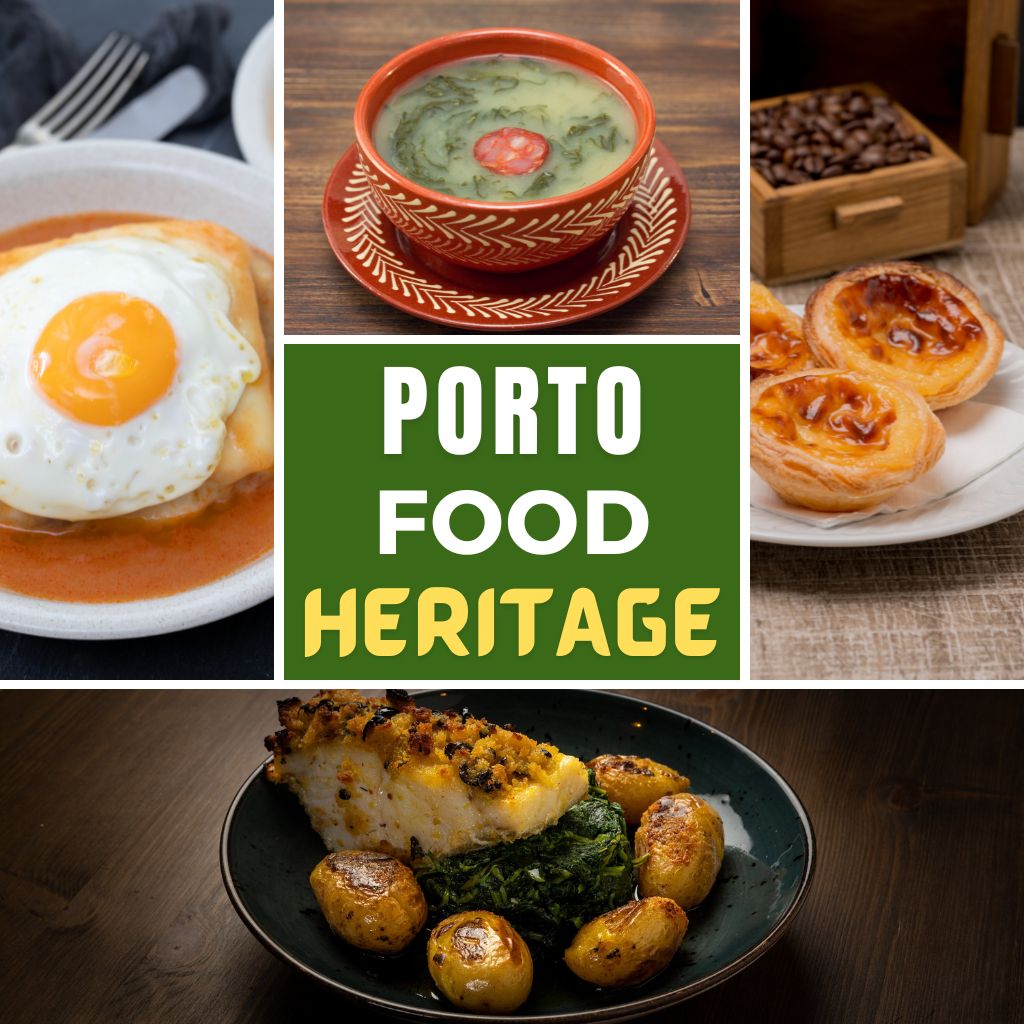
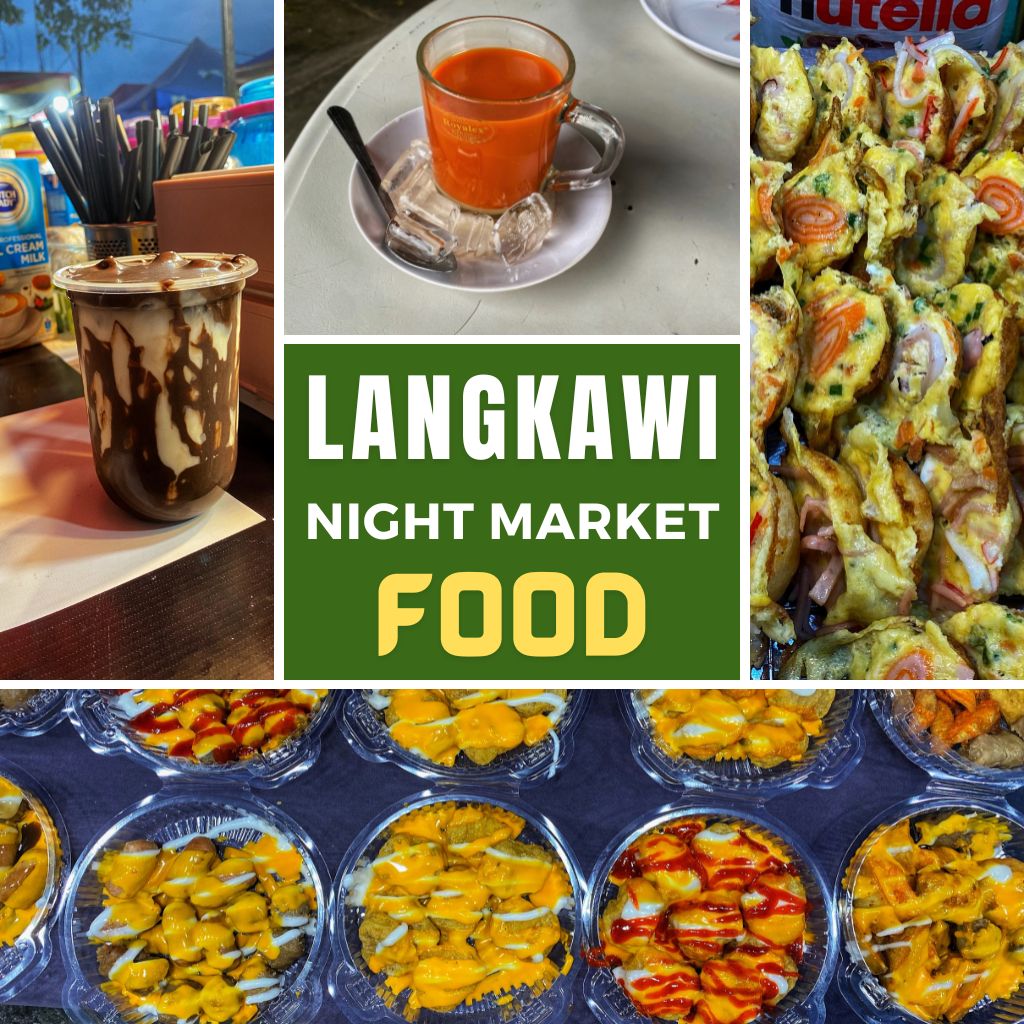
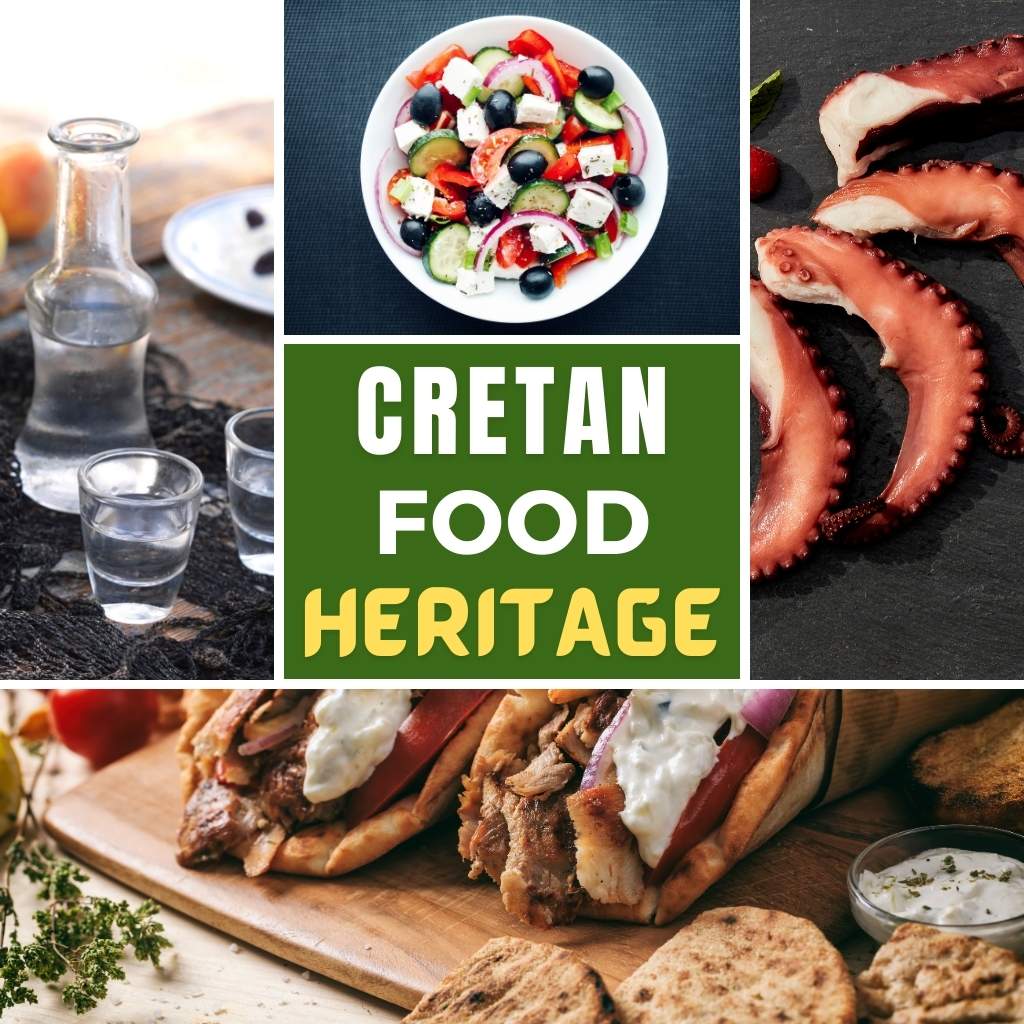

Add a Comment